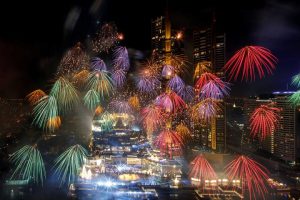But why were Jingles so Effective?
As we’ve mentioned, the commercial licensing of pop songs caused the decline of the jingle. To gain a loyal brand following, a good product was simply not enough — a company now had to represent a lifestyle or an identity. As markets became increasingly clogged with indistinguishable products, it was no longer possible (or relevant) to tout the absolute supremacy of a product. It’s widely known that most humans have a deep emotional connection to music — so instead of trying to form a new connection with consumers, why not let the Rolling Stones, Mike and the Mechanics, Fall Out Boy or Bob Seger do it for you? In 1987, the Beatles tune “Revolution” was licensed for a Nike shoe campaign, which would prove to be the start of a revolution in advertising. Piggybacking on emotional and cultural experience became the most effective way to sell products.
A director of photography supervises the lighting of each shot to ensure consistency. In the UK for most of the 20th century, the BBC was the preeminent provider of outside broadcast coverage. Although varying greatly depending on the era and subject covered, these trucks were normally crewed by up to 15 skilled operators and production personnel. Live events are usually covered by Outside Broadcast crews using mobile television studios, known as scanners or OB trucks.
Principal photography is the actual filming of the episode. To complete a production on time, a second unit may be filming a different scene on another set or location at the same time, using a different set of actors, an assistant director, and a second unit crew. Conversations may be filmed twice from different camera angles, often using stand-ins, so one actor might perform all their lines in one set of shots, and then the other side of the conversation is filmed from the opposite perspective. Depending on scheduling, a scene may be shot in non-sequential order of the story. A scene is further divided into shots, which should be planned during pre-production. Director, actors, and crew gather at a television studio or on location for filming or videoing a scene.
If audiences respond well to the pilot, the network will pick up the show to air it the next season (usually Fall). When all the writers have been used, episode assignment starts again with the first writer. Other times, they pass entirely, forcing the show’s creator to “shop it around” to other networks. Sometimes they save it for mid-season, or request rewrites and additional review (known in the industry as development hell). On other shows, however, the writers work as a team. Many shows never make it past the pilot stage.
In 2004, Lost’s two-hour pilot cost $10 to $14 million, in 2008 Fringe’s two-hour pilot cost $10 million, and in 2010, Boardwalk Empire was $18 million for the first episode. In 2011, Game of Thrones was $5 to $10 million, Pan Am cost an estimated $10 million, while Terra Nova’s two-hour pilot was between $10 to $20 million. This license fee does not cover the show’s production costs, leading to the deficit. Many scripted network television shows in the United States are financed through deficit financing: a studio finances the production cost of a show and a network pays a license fee to the studio for the right to air the show.


